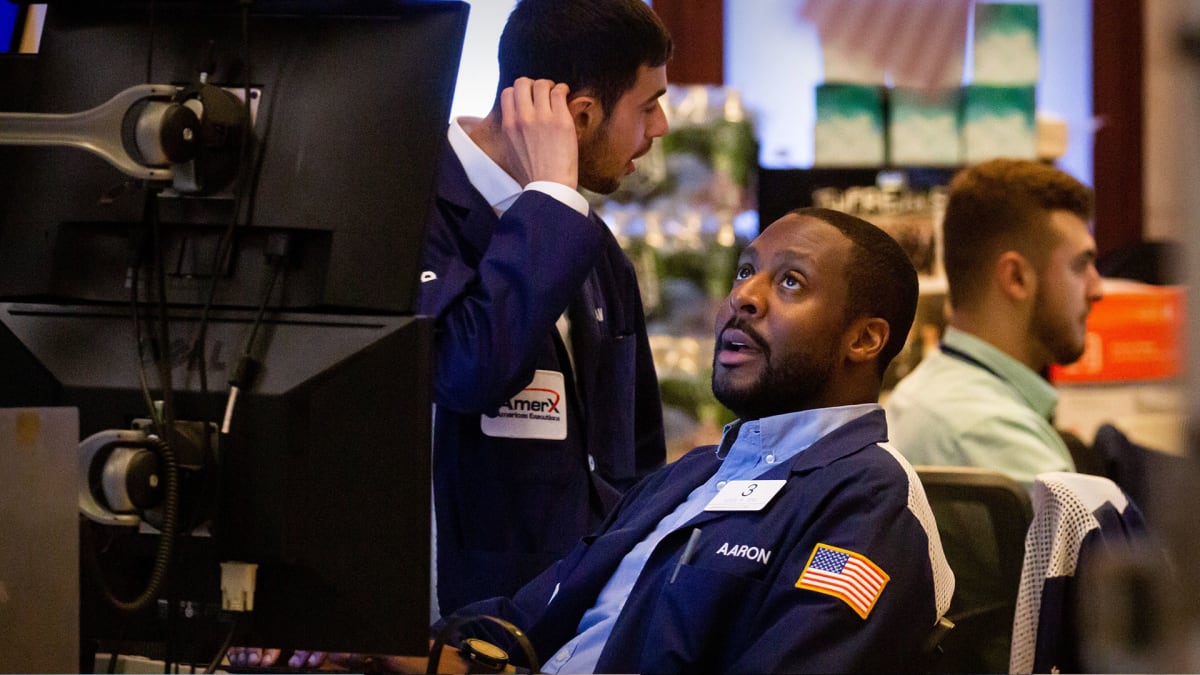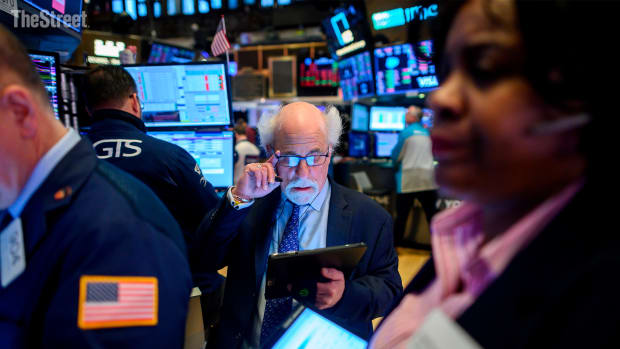
The stock market will likely see an uptick during the last five trading days of the year, according to economists and market strategists.
Investors hoping for the so-called Santa Claus rally might see their wish fulfilled.
The Nasdaq saw the largest gain at 1.89% during midday on Wednesday. The Dow rose by 1.74% while the S&P increased by 1.75%.
Consumer confidence levels reached an eight-month high as people focused less on inflation as the cost for some goods such as gasoline have declined for several weeks. Growing optimism about the future of the economy, the prospect of jobs and the cost of goods spurred consumers to new confidence levels, according to the Conference Board's data. Consumers believe that the prices will continue to decline, boosting their disposable spending amounts.

JOHANNES EISELE/AFP via Getty Images
Why a Santa Claus Rally Could Occur
The three major indexes of the stock market could rally and experience increases, Thomas Hayes, chairman of Great Hill Capital in New York, told TheStreet.
"I do think there will be a bid into year end," he said.
Investors should avoid buying or selling stocks on that basis, Hayes said.
"Amateurs deal in absolutes, professionals deal in probabilities," he said. "Probabilities favor strength for the next few weeks, but it is not a basis to take a short-term gamble on indices or options."
Instead, they should look for companies that they want to own and "buy them for the long term," Hayes said.
"We are buying high quality companies that sold off due to headlines and temporary weakness which have strong prospects looking one to three years out," he said.
Despite the Federal Reserve increasing interest rates again, the economy will continue to "show a decline in headline inflation, yielding a maximum of one more hike of 25 basis points and then a long pause to see the lagged effects of this aggressive tightening cycle," Hayes said.
Money managers have slowly started coming out of cash over the last four weeks, but cash levels are still above the levels of the lows from work from home and the pandemic, he said.
"That money will have to go to work and with the two 'high risk' data points (CPI and Fed) now in the rearview mirror along with most of tax-loss selling, managers can start to re-focus on bargains created by the annus horribilis in risk assets," Hayes said.
This level of underweight equities and overweight cash only occurs near major inflection points, he said.
"This time will be no different," Hayes said. "We expect to see a bid in equities well into the first couple of weeks of the new year. Then managers will start to digest fourth quarter earnings season and guidance before discerning allocations moving forward."
The market will need a catalyst to deliver the fourth consecutive year of a Santa Claus rally, Anthony Chan, a former economist at JPMorgan Chase, told TheStreet.
The catalyst could be a glimmer of good news from China's Covid strategy - either a continuation of its reopening strategy or news that the number of new cases of infection are coming in below expectations, he said.
A more narrow path toward a Santa Claus rally is also possible if the market continues to "react negatively to concerns of overtightening and the risk of a recession," Chan said.
"In that scenario, the forward price-to-earnings ratio could be driven down sharply to levels where we could see a year-end bounce and generate a traditional Santa Claus rally," he said. "That rally could continue if the inflation data continues to surprise to the downside and sharply call into question the Fed’s excessive caution on inflation."
But the recent message from Fed Chairman Jerome Powell was not supportive of a Santa Claus rally as "he slammed the door of any possibility of an easing in 2023 unless the data on inflation surprises convincingly to the downside," Chan said.
One important economic factor to watch would be average hourly earnings and the labor force participation rate for signs that the tightness in the U.S. labor market is easing, he said.
Powell has stated that the tight labor market remains a big hurdle in the U.S. economy’s fight against inflation.
"The equity market rally will rally if the Fed sees continued success on the inflation front," Chan said.
The Fed announced on Dec. 14 that it was was raising its median estimate of the policy rate for 2023 to 5.1% from its previous estimate of 4.6% since it was disappointed with inflation trends.
"Equity markets need to see evidence that Fed concerns were misplaced," he said. "Let’s hope markets will react to the current sell-off by keeping our expectations of a year-end Santa Claus rally alive!"
The potential for a year end really has increased significantly over the course of last week, Art Hogan, chief market strategist B Riley Financial, told TheStreet.
"A nice rally into the end of the year could be successful," he said.
The majority of the tech loss selling is "is likely in the rearview mirror," Hogan said. "The set up is pretty favorable into the end of the year."
Investors should focus on buying stocks in the consumer staples, healthcare and utilities sectors because there will be slower economic activity in 2023, he said.
The mega cap tech companies such as Apple (AAPL), Meta Platforms (META), Alphabet (GOOGL) and Microsoft (MSFT) have seen their valuations completely "washed out" and could be the biggest bargains, Hogan said.
There is a better chance than not that there will be a Santa Claus rally based on the history of the returns of the stock market, Robert Johnson, a professor at the Heider College of Business at Creighton University, told TheStreet.
"Betting against a Santa Claus Rally historically would be a losing proposition," he said.
Small cap stocks tend to perform better during a Santa Claus rally, Johnson said.
"One curious finding is that a portfolio of stocks with market capitalization in the bottom 10% outperformed a portfolio of stocks with market capitalization in the top 10% percent by an incredible 4% during the Santa Claus rally," he said.
Rally Could Have Happened Already
The uptick in the rally could have occurred already, Tim Seymour, founder of Seymour Asset Management in New York, told TheStreet.
"Didn't the Santa Claus already slip in early?" he said. "In fact, like retailers, he got going before Thanksgiving."
The first part of the decline in inflation rates was a combination of less inflation and peak Fed, Seymour said.
"Now we are worried about the next fall in rates which has begun and is rooted in a view the economy is slowing faster and Powell is reiterating higher for longer no matter what the economy does," he said.
The markets could still see "some juice here," Seymour said. "I'm worried that volatility is too low and we have not really even seen earnings downgrades."
There are still buying opportunities, he said.
"We continue to position our clients in high quality growth and those companies who can continue to generate solid free cashflow and pay down debt in this environment, and despite the challenges in equities, higher rates have also presented opportunities for blended credit and fixed income allocations that are diversifying and hedging our slower equity growth," Seymour said.
The rally in December tends to arrive more often than not, Steve Sosnick, chief strategist of Interactive Brokers, a brokerage based in Greenwich, Conn., told TheStreet.
"Anything can happen during a low volatility period, volumes are light and participation is low," he said. "There are no guarantees."







